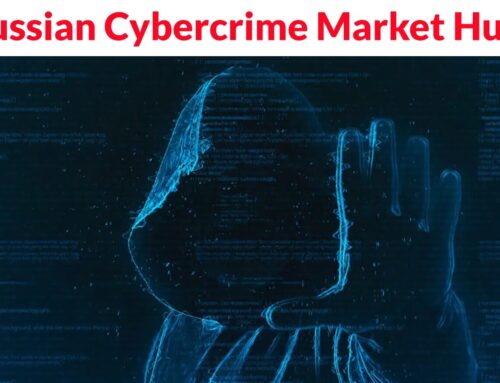
HeartCrypt-Packed EDR Killer Tools ‘AVKiller’ Actively Used in Ransomware Attacks
The Rise of AVKiller: When EDR Meets Its Match in Ransomware Attacks
Endpoint Detection and Response (EDR) solutions are foundational to modern cybersecurity strategies, acting as the eyes and ears within an organization’s digital perimeter. However, a concerning new threat, dubbed AVKiller, has emerged to systematically dismantle these critical defenses. This novel “EDR killer” payload, first sighted in mid-2024, is actively being deployed in ransomware campaigns, significantly escalating the risk for unprepared organizations.
What is AVKiller and How Does It Operate?
AVKiller isn’t just another piece of malware; it’s a specialized tool designed with one primary objective: to neutralize EDR and other endpoint security agents. Its effectiveness stems from its sophisticated evasion techniques, particularly its reliance on the HeartCrypt packer-as-a-service. This service allows threat actors to obfuscate AVKiller’s true functionality, making it exceedingly difficult for traditional static signature-based detection mechanisms to identify and block.
Once deployed, AVKiller systematically identifies and terminates processes associated with common EDR products, antivirus software, and other security tools. By crippling these defenses, AVKiller creates a wide-open path for ransomware payloads to execute unimpeded, leading to rapid and widespread encryption of critical data and systems.
The Role of HeartCrypt Packer in Evasion
The use of the HeartCrypt packer is a critical component of AVKiller’s success. Packing, in simplest terms, involves compressing and encrypting malware code, making it appear benign to security solutions. HeartCrypt, as a “packer-as-a-service,” provides threat actors with an accessible and sophisticated method to achieve this obfuscation at scale. This service often incorporates polymorphic and metamorphic techniques, ensuring that each instance of AVKiller has a slightly different signature, further complicating detection by pattern-matching engines.
Impact on Cybersecurity Defenses
The active deployment of AVKiller introduces a significant challenge to existing cybersecurity frameworks. Organizations that rely solely on EDR solutions for their primary defense are particularly vulnerable. The ability of AVKiller to disable these tools preemptively means that by the time ransomware begins its destructive work, the very systems designed to detect and stop it may already be offline. This scenario dramatically reduces the window for incident response and increases the likelihood of successful ransomware deployment and data exfiltration.
Remediation Actions and Mitigations
Facing a sophisticated EDR killer like AVKiller requires a multi-layered and proactive defense strategy. Relying on a single security solution is no longer sufficient. Organizations must implement a defense-in-depth approach that incorporates various preventative, detective, and responsive controls.
- Layered Security Architecture: Implement a robust security stack that includes not just EDR, but also Next-Generation Antivirus (NGAV), Network Detection and Response (NDR), and Security Information and Event Management (SIEM) systems. Redundancy and diversity in security tools make it harder for a single point of failure to compromise the entire defense.
- Behavioral Analysis and Anomaly Detection: Focus on EDR and other security tools that leverage advanced behavioral analytics. While HeartCrypt can obfuscate static signatures, behavioral detection engines can identify malicious activities, such as attempts to terminate security processes, even if the underlying malware is unknown.
- Application Whitelisting: Strictly control which applications are allowed to run on endpoints. Application whitelisting prevents unauthorized executables, including EDR killers, from launching. This is a highly effective, albeit sometimes challenging, control to implement.
- Principle of Least Privilege: Ensure that users and processes operate with the minimum necessary permissions. This can limit the damage an EDR killer can inflict, even if it manages to bypass initial defenses.
- Regular Security Audits and Penetration Testing: Proactively test the effectiveness of your security controls against known and emerging threats. This helps identify weaknesses before adversaries can exploit them.
- Patch Management: Keep all operating systems, applications, and security software updated. Threat actors often exploit known vulnerabilities, some of which may have associated CVEs like CVE-2023-38831 (though this is a general example, not specific to AVKiller’s direct exploitation).
- Offensive Security Training: Train security teams on emerging attack techniques, including those involving EDR evasion. Understanding the adversary’s methods is crucial for effective defense.
Conclusion
The emergence of AVKiller, leveraging the HeartCrypt packer, signals a dangerous evolution in ransomware tactics. Adversaries are actively developing tools specifically designed to undermine core cybersecurity defenses, highlighting the critical need for organizations to adapt their strategies. By embracing a multi-layered security approach, focusing on behavioral detection, implementing strict access controls, and continuously validating defenses, organizations can significantly enhance their resilience against these sophisticated EDR killer tools and mitigate the devastating impact of ransomware attacks.





